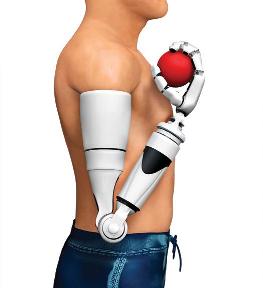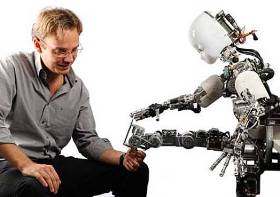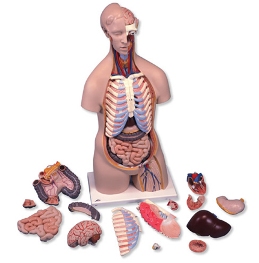1. NASA Light craft - You are around the World in 90 Minutes.
The U.S. Air Force and Brazil are developing a Light craft concept which one day ride laser produced explosions into the sky could also deliver passengers or cargo all over the world. Barring wild ride space planes which could take off and land like standard aircraft which have begun undergoing serious development in the United States and U.K. also every one can fly within the next few years. Phileas Fogg took 80 days to go all over the world but travelers may ultimately hop halfway around the world in less than an hour.
2. Perfect Artificial Limb - User soon have artificial arms, hands and legs.

U.S. veterans and other prosthetic user may soon wield artificial arms, hands and legs as easily as they organize their natural limbs. Most advanced prostheses tend to utilize "smart" microprocessors which act as tiny brains to anticipate how a user will walk or move an arm. But both monkeys as well as humans have previously used brain signals alone to organize digital applications and robotic arms that covers the way for new brain interfaces through artificial limbs. Such type of technology could then retrofit the latest prostheses to provide users ultimate control over "Luke" Skywalker arm.
3. Sixth Sense - Interact seamlessly with online world.
Sixth Sense allows people to interact seamlessly among physical and online worlds by utilizing a small projector, webcam and mobile phone which are wirelessly connected. People could ultimately hold a hitchhiker's guide to everything which they see. A carton of OJ in superstore and nutritional comparison about that brand would appear. Flip throughout new best sellers in bookstore and reader reviews might flash on the pages. MIT has already unveiled a prototype of such a technology which combines a webcam, a projector and a smart phone to link the Internet's vast array of information with the real world. Such wearable devices would work together with embedded "smart" systems and tags to create an augmented reality, where staring at a street might bring up GPS coordinates and a local map. In 21st century in order to reigns supreme.
4. Mind-Reading devices - The realm of science fiction.
It is true that mind-reading devices remain in the realm of science fiction and lie detectors rely on indirect cues to catch fibbers. Brain scans have allowed neuroscientists to forecast what people will do during specific task experiments and even to examine when a person will make a mistake up to half a minute beforehand. One more technique has used near-infrared light to figure out straightforward preferences based on brain activity. These feats rely on analyzing brain patterns that occur during specific actions, slightly truly cracking the brain's neural code, but they still have scientists and legal experts debating mind-privacy issues. However, in near future they will just utilize Twitter for a meeting of minds.
5. Hack the Brain - A better understanding of human perception.

Most of the human brain remnants a mystery embedded in billions of neurons. Now a day's researchers behind Blue Brain Project have publicized plans to create functioning, artificial human brain within the next decade. They have already modeled part of an artificial rat brain using the IBM supercomputer Blue Gene and state that simulated brain cells have even begun self-organizing exclusive of human intervention. Achievement in reverse engineering the brain could lead to a model for biomedical testing as well as a better understanding of human consciousness. The researchers only caution that it is no artificial intelligence.
6. Body Regeneration - Entirely replace organs in the human body.

No one has regenerative powers till now but patients can anticipate a growing array of therapies to repair or entirely replace organs in human body. A British team grew the world's first artificial liver from umbilical cord stem cells in 2006, and other researchers have since found that even the heart may harbor stem cells capable of regenerating the organ. Adult stem cells have also helped restore eyesight using a patient's own healthy eye stem cells in an Australian study, and Chinese scientists demonstrated the potential of adult stem cells by creating live mice from reprogrammed skin cells. The future of independently tailored organs also therapies may soon arrive.
7. Harness the Sun's Fiery Furnace - Fusion's unbeatable energy efficiency.
Nuclear fusion has kept the sun shining for billions of years. Now day's scientists require recreating that power on Earth and finally tapping into fusion's unbeatable energy efficiency. Giant lasers at the National Ignition Facility could help along that breakthrough by focusing their power on a tiny hydrogen fuel pellet, and ideally release more energy than what the lasers require. Presently more alternatives engage the magnetic confinement of high temperature plasma concerned in fusion or even a rebranded form of cold fusion. For now, Live Science readers have already voted on their best bets for alternative energies.
8. Control of Climate Globally - Atmosphere to divert sunlight and cool the planet.
Forget modest goals like trying to halt Mother Nature from raining on the Olympics. Geo-engineering plans befitting Bond villains have become hot topics for the National Academy of Sciences, the American Meteorological Society and the White House science advisor. Ideas comprise lofting reflective particles up into atmosphere to divert sunlight also cool the planet or seeding the oceans with iron to encourage carbon gobbling algae blooms. Also even billionaire Bill Gates attached a patent filing on an idea to slow or stop hurricanes by organizing a fleet of ships to churn the ocean and cool the warm surface water which fuels such storms. Climate control technologies have approximately become reality which raises question of whether scientists and policymakers desire to risk the side effects of such schemes.
9. Eliminate Waste - Turn all trash into reusable materials.
New technologies look to turn all our trash into reusable materials. Feathers of Chicken and other agriculture cast offs that becomes future plastics. Biodegradable plastics which dissolve harmlessly in seawater may actually encourage people to throw their garbage into the ocean. Sewage, food scraps and other waste has previously begun to fuel some power plants and generators for the U.S. Army as well as civilians alike. Accomplish 100% sustainability may still sound daunting, but the efforts do add up. Researchers of MIT have begun a Trash Track project to gauge costs and patterns of waste disposal in Seattle, London and New York in hopes of helping more people think green.
10. Feed World - Vault to safeguard the future of food.
Solving world hunger represents an incredibly difficult task given that political situations also economics of each region bring their own complication. However, scientists have moved to protect the important crops that feed most of the world. Researchers continue to develop different varieties of corn, rice and wheat which has greater yields also have more resistant to drought conditions, insects and also temperature changes. New information technologies (IT) can remain farmers updated on the condition of their crops and agricultural practices which preserve nutrient-rich soil in the long run. Still lab grown meat could help satiate growing all over the world's demand as if people can get over the sick factor. Also if all else fails scientists have preserved thousands of seeds in a doomsday vault to safeguard future food.